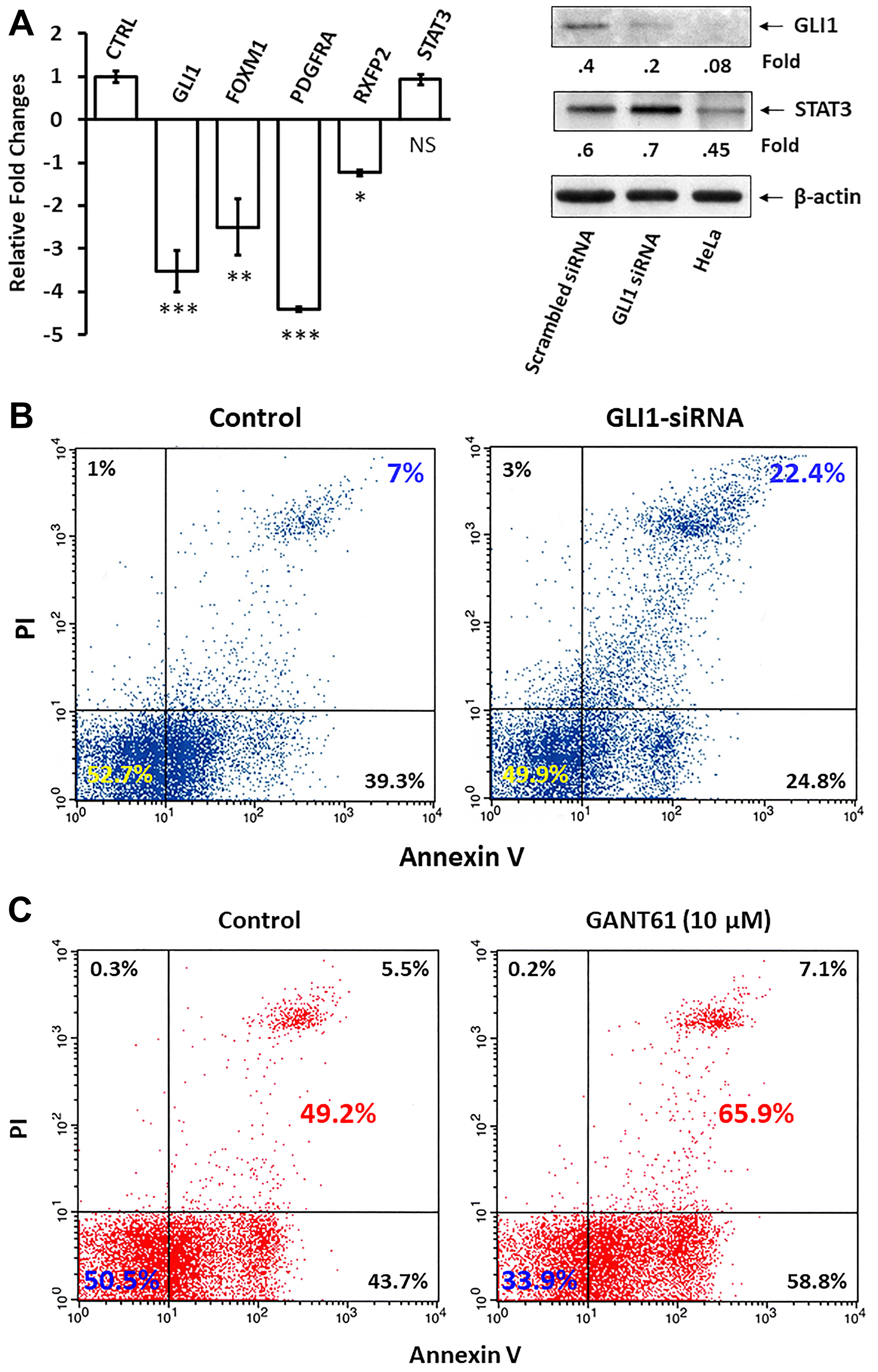Oncotarget published "STAT3 induces the expression of GLI1 in chronic lymphocytic leukemia cells" which reported that what induces GLI1 expression in GLI1-unmutated CLL cells is unknown.
Because signal transducer and activator of transcription 3 is constitutively activated in CLL cells and sequence analysis detected putative STAT3-binding sites in the GLI1 gene promoter, the authors hypothesized that STAT3 induces the expression of GLI1.
Western immunoblotting detected GLI1 in CLL cells from 7 of 7 patients, flow cytometry analysis confirmed that CD19 /CD5 CLL cells co-express GLI1 and confocal microscopy showed co-localization of GLI1 and phosphorylated STAT3. Chromatin immunoprecipitation showed that STAT3 protein co-immunoprecipitated GLI1 as well as other STAT3-regulated genes.
Transfection of CLL cells with STAT3-shRNA induced a marked decrease in GLI1 levels, suggesting that STAT3 binds to and induces the expression of GLI1 in CLL cells.
An electromobility shift assay confirmed that STAT3 binds, and a luciferase assay showed that STAT3 activates the GLI1 gene.
Transfection with GLI1-siRNA significantly increased the spontaneous apoptosis rate of CLL cells, suggesting that GLI1 inhibitors might provide therapeutic benefit to patients with CLL.
Dr. Zeev Estrov from The University of Texas MD Anderson Cancer Center said, "Chronic lymphocytic leukemia (CLL) is characterized by gradual accumulation of neoplastic B cells."
"Chronic lymphocytic leukemia (CLL) is characterized by gradual accumulation of neoplastic B cells."
Although CLL cells proliferate and die, constitutive activation of pro-survival pathways protects CLL cells from undergoing spontaneous apoptosis, hence contributing to the steady buildup of the neoplastic clone.
In CLL cells gene expression profiling detected high levels of the glioma associated oncogene-1 and GLI1 levels correlated with disease progression and unfavorable clinical outcome.
However, what induces the expression of GLI1 in CLL cells that do not carry GLI1 gene mutations is unknown.
Like phosphotyrosine STAT3, phosphoserine STAT3 binds and activates STAT3-regulated genes that provide CLL cells with a survival advantage.

Figure 4: GLI1 protects CLL cells from apoptosis. (A) CLL cells were transfected with GLI1-siRNA or with an empty vector marked as CTRL (left bar). The comparative CT method was used to compare the transcript levels of GLI1, STAT3 and GLI1-regulated genes Forkhead box M1 (FOXM1), Platelet-derived growth factor receptor-α (PDGRFA) and Relaxin family peptide receptor 2 (RFPR2). *** denotes P < 0.0001, ** denotes P < 0.001, * denotes P < 0.01, and NS denotes statistically not significant compared to control. (B) Flow cytometry analysis of CLL cells that were transfected with GLI1-siRNA or with GAPDH (transfection control). Apoptosis rate was assayed double staining with annexinV/PI. As shown the rates of apoptotic cells increased by approximately than 3-fold. (C) The apoptosis rates of CLL cells incubated overnight with or without 10 μM of the GLI1 inhibitor GANT61 are shown. Depicted are data from 3 different experiments.
Because sequence analysis detected putative STAT3 binding sites in the GLI1 gene promoter region, they wondered whether STAT3 induces the expression GLI1 in CLL cells.
The Estrov Research Team concluded in their Oncotarget Research Output because GLI1 is overexpressed and provides CLL cells with survival advantage, GLI1 is a potential target for therapeutic intervention in CLL.
Specific GLI1 inhibitors, such as GANT61, or commonly used agents with anti-GLI1 activity might increase the death rate of CLL cells.
For example, arsenic trioxide, known for its activity in acute promyelocytic leukemia, was recently found to inhibit the transcription of GLI1 and induce apoptosis of CLL cells.
Nevertheless, whether inhibition of the Hedgehog pathway by targeting GLI1 is an effective strategy to treat CLL, remains to be determined.
DOI - https://doi.org/10.18632/oncotarget.27884
Full text - https://www.oncotarget.com/article/27884/text/
Correspondence to - Zeev Estrov - [email protected]
Keywords - CLL, STAT3, GLI1, apoptosis, transcription
About Oncotarget
Oncotarget is a bi-weekly, peer-reviewed, open access biomedical journal covering research on all aspects of oncology.
To learn more about Oncotarget, please visit https://www.oncotarget.com or connect with:
SoundCloud - https://soundcloud.com/oncotarget
Facebook - https://www.facebook.com/Oncotarget/
Twitter - https://twitter.com/oncotarget
LinkedIn - https://www.linkedin.com/company/oncotarget
Pinterest - https://www.pinterest.com/oncotarget/
Reddit - https://www.reddit.com/user/Oncotarget/
Oncotarget is published by Impact Journals, LLC please visit https://www.ImpactJournals.com or connect with @ImpactJrnls
Media Contact
[email protected]
18009220957x105



